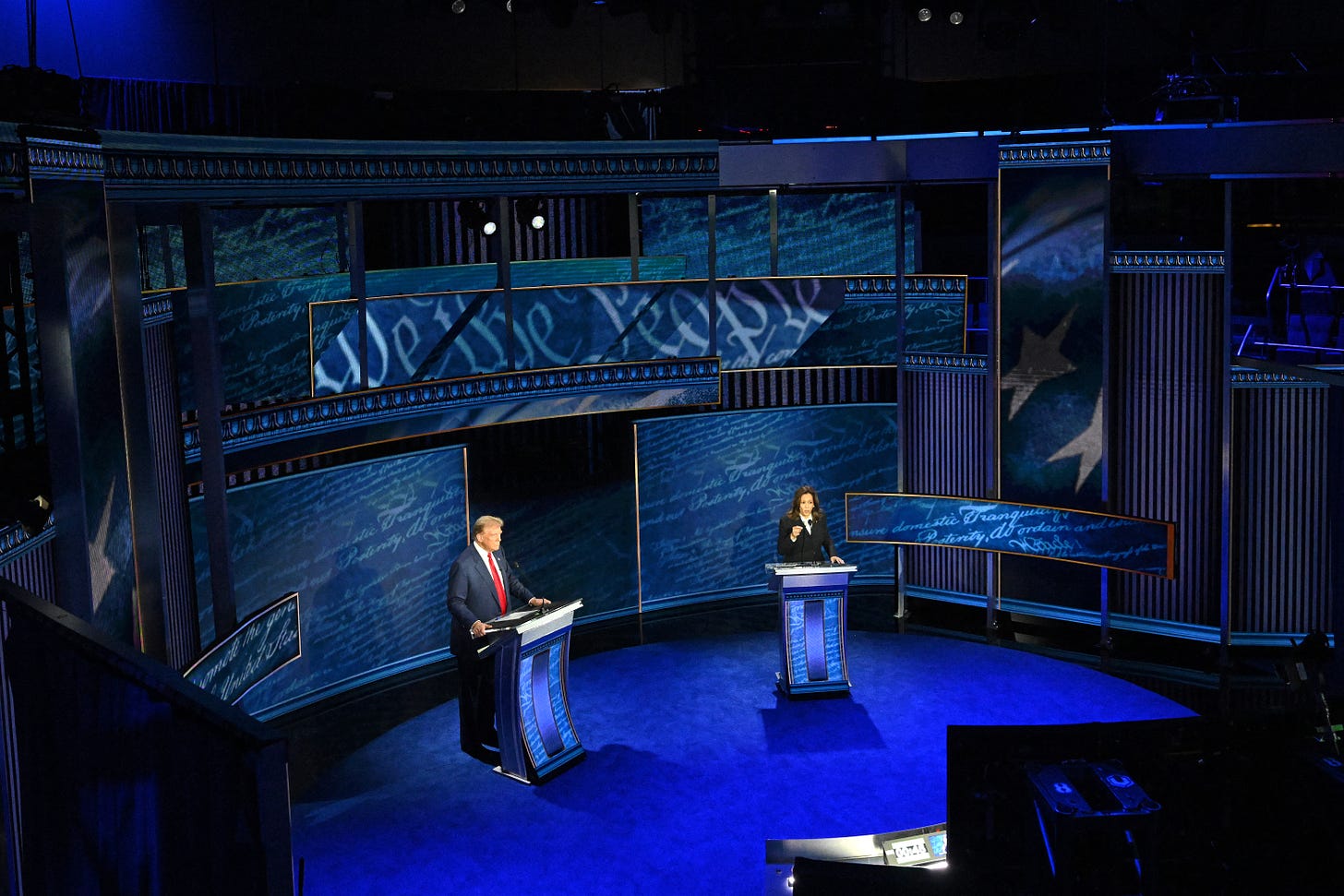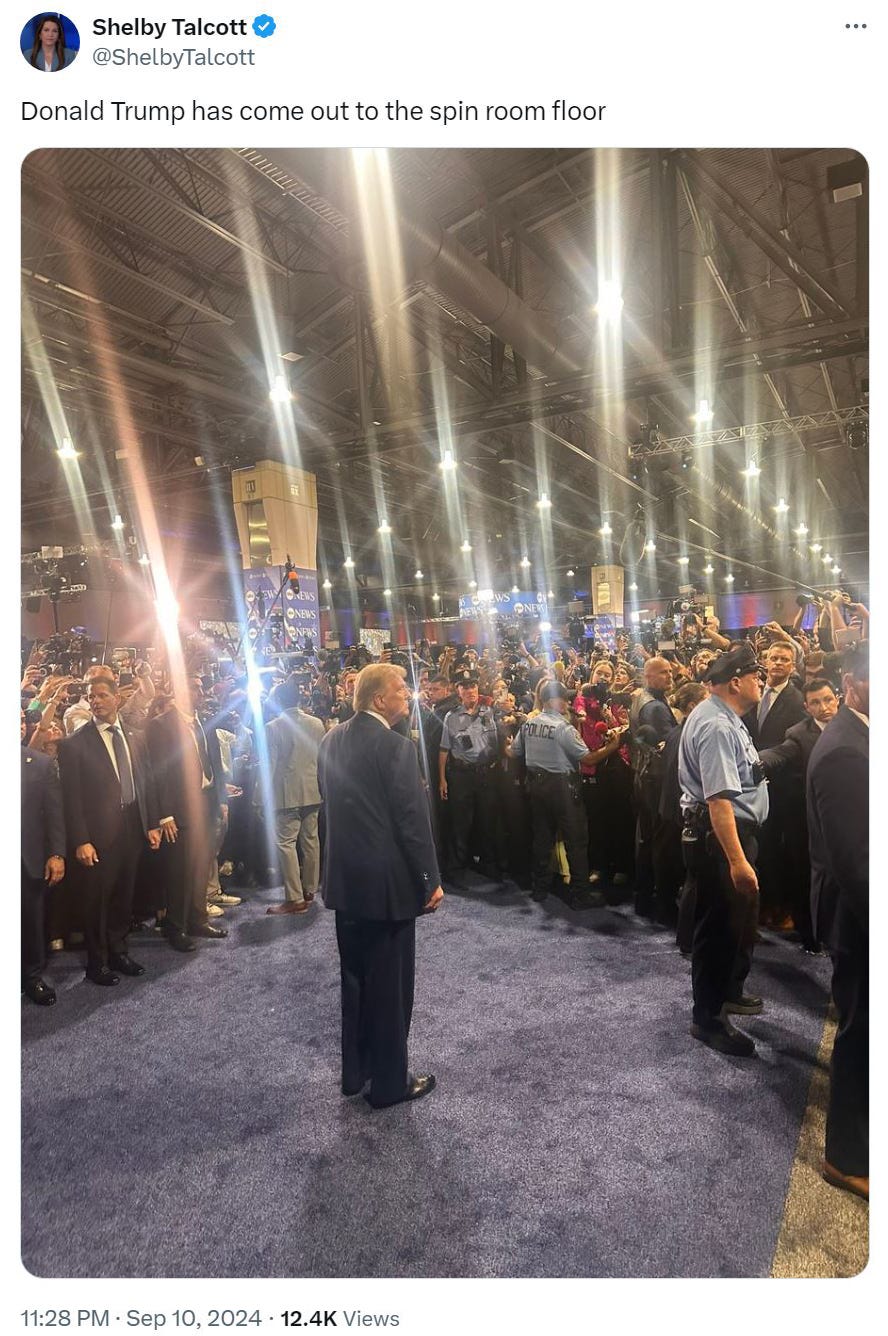
Harris Managed To Do TV Better Than Trump
The vice president was, simply put, better at the medium the ex-president mastered.

THERE IS A THREAD OF CONVENTIONAL WISDOM that the best way to watch a debate is with the sound off. This may seem utterly illogical since—after all—it’s a debate, not a silent movie.
But there’s something to that idea. This is a visual medium as much as an aural one. How the candidate looks, reacts, and responds is arguably more important than what he or she says. There’s plenty of history to back this up: Nixon’s five-o’clock shadow, George H.W. Bush looking at his watch, Al Gore’s weirdly space-invading body language.
On this front, as with many others, it’s hard not to come away from Tuesday night’s presidential debate not convinced that Kamala Harris scored a major victory.
The vice president had, perhaps, an early rough patch, with some nervous energy manifesting itself as she shifted left and right behind the lectern. But she soon settled in, looking directly at the camera, smiling and speaking steadily. Her demeanor was calm and professional. She didn’t seem to break character or get flustered. But she also didn’t seem oblivious to her surroundings. When Trump told a lie, she shook her head. When he told a real whopper, she smiled knowingly.
The defining image of the night will be the wide shots of the stage: a dour Trump—appearing joyless and increasingly agitated—never seemed to look at Harris once. She, by contrast, shifted her body to the right when he spoke, turning to him like a mother addressing a child in tantrum, or to look on confusedly as he went on a rant.
In the end, Harris beat Trump at the business of television, which is a remarkable achievement, and probably one that Trump will rue. For him, television is gospel.
Harris and her team get most of the credit for this. The preparations she made for the night were evident throughout. She and her aides went in with a plan to bait Trump into overreactions. And he took it—repeatedly fumbling debate sections that would have favored him (on subjects like immigration, inflation, and Afghanistan) to address sideshow topics that Harris tossed out like chum to a hungry shark (just how much was his inheritance???).
Which is to say that it was not just Harris’s prep work but also Trump’s shortcomings that decided the night. He was unable to keep his focus or cool. He never got around to saying he’d veto a national abortion ban, he invited the idea that he’d once more try and repeal Obamacare, and he refused to say he wants Ukraine to win. To be fair, it’s possible that he believes a veto should be off the table, that Obamacare should be repealed, and that the Russians are the good guys. But smart debaters can deftly maneuver around this type of tripwire. Trump allowed Harris to get to the right of him on China and crime. He called himself a leader on “fertilization.” He glommed on to online MAGA’s fever dream that dogs are being eaten by migrants in Ohio. His closing remarks touched on energy policy in . . . Germany.
This was not savvy stuff. And again, you didn’t need to have your volume turned up to understand it. The frustration was evident on Trump’s face. As the night went on, he went from talking with cadence to something more akin to barking.
And it was driven fully home when the debate was over, the second-most-interesting visual of the night was produced. There was Trump, coming out into the spin room, the place where a candidate sends his or her deputies to work the press—since God knows that’s the purview of the plebs, not the person in charge.
A photo snapped by Semafor’s Shelby Talcott shows Trump staring out into the sea of reporters as they were held back at a distance by the police on site. He is standing alone, seemingly looking for what to say and whom he wants to say it took. There is no triumph in his posture or his gaze. His being there was an admission of failure, and he seemed to wear it:
















